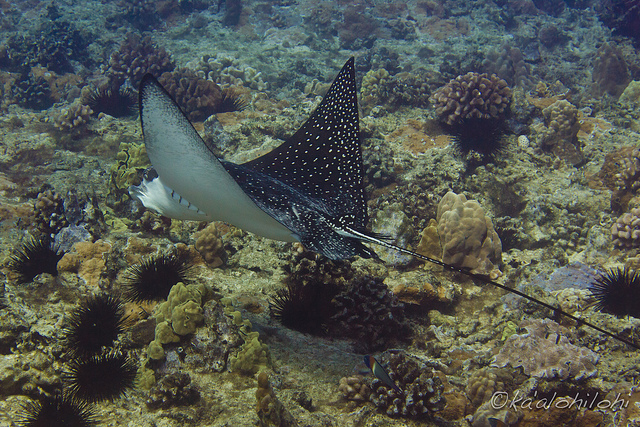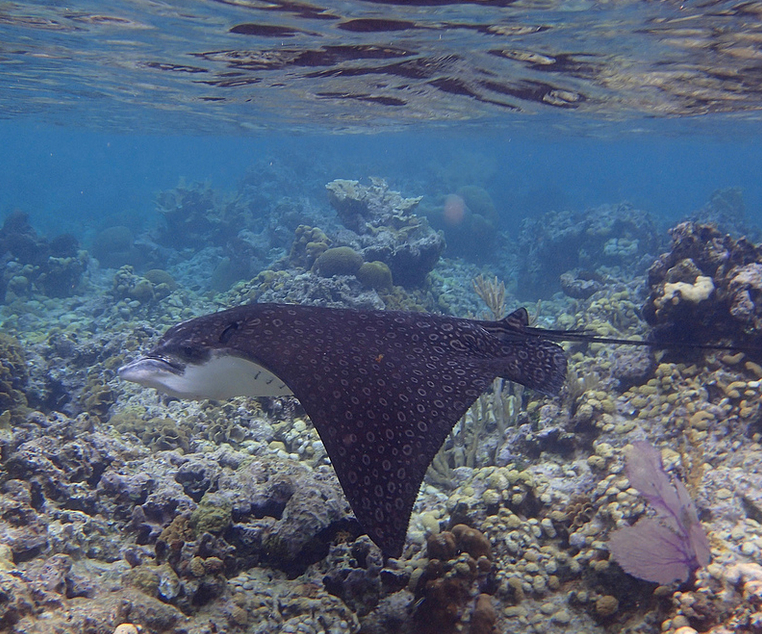Habitat and Geography
Aetobatus narinari live in
tropical and warm temperate waters around the globe. They are
commonly found in the Western Pacific, Central Pacific, Eastern
Pacific, and Central Atlantic. Geographic differences between
individuals found in the Western/Central Pacific, Eastern
Pacific, and Central Atlantic have led re searchers to believe
A.
narinari is a species complex that originated in the
Indo-Pacific (Richards et al. 2009).
searchers to believe
A.
narinari is a species complex that originated in the
Indo-Pacific (Richards et al. 2009).
Eagle rays are commonly observed in coral reefs
and bays near coastal areas. They often swim near the surface
and have the ability to jump completely out of the water. They spend most of their time in
pelagic zones, but travel closer to shore a few times a day to
feed (for detailed information on the diet of A. narinari,
go to the interactions page). This can be problematic in areas
with fisheries, because eagle rays are often caught
unintentionally as bycatch. Since A. narinari can be found in
locations throughout the world, they share their habitat with a
myriad of different organisms, such as
Hippocampus kelloggi,
Cryptotethya crypta, and
Enteroctopus dofleini.
Observations of A. narinari
suggest that their behavior
 is
strongly influenced by the tidal cycle. A study done in Bimini
found that A. narinari aggregate in specific core areas
during low tides primarily to rest (Silliman and Gruber 1999). A
core area is a location that a particular organism is strongly
attached to. Various core areas in Bimini shared common
characteristics, including having a strong current, being
between three and six feet deep, and a temperature of 24-27
degrees Celsius. During high tides, the spotted eagle rays
showed the most activity and traveled the greatest distance. As
the high tides started to dwindle, they were often observed
foraging for food and socializing with other eagle rays, but
usually made it back to their core areas by low tide. This type
of behavior has also been observed in other marine organisms,
such as
tuna and billfish.
is
strongly influenced by the tidal cycle. A study done in Bimini
found that A. narinari aggregate in specific core areas
during low tides primarily to rest (Silliman and Gruber 1999). A
core area is a location that a particular organism is strongly
attached to. Various core areas in Bimini shared common
characteristics, including having a strong current, being
between three and six feet deep, and a temperature of 24-27
degrees Celsius. During high tides, the spotted eagle rays
showed the most activity and traveled the greatest distance. As
the high tides started to dwindle, they were often observed
foraging for food and socializing with other eagle rays, but
usually made it back to their core areas by low tide. This type
of behavior has also been observed in other marine organisms,
such as
tuna and billfish.
Continue on to learn about Form and Functions or return to the Home page.